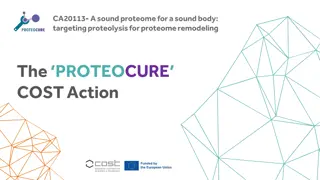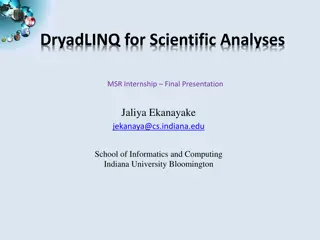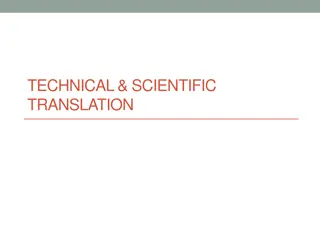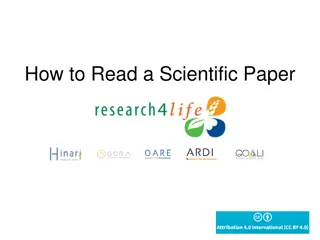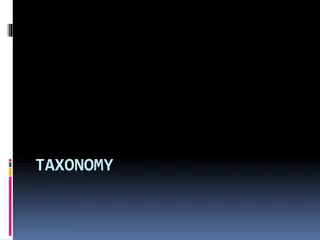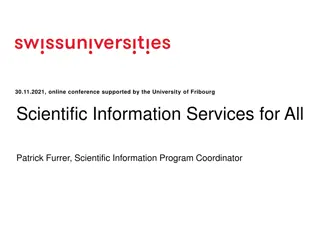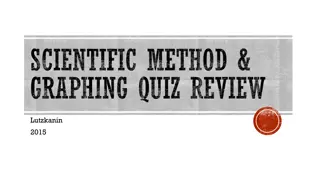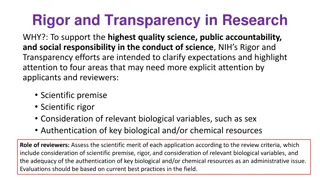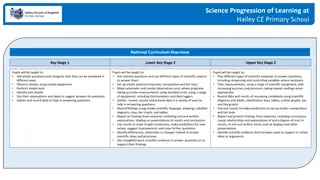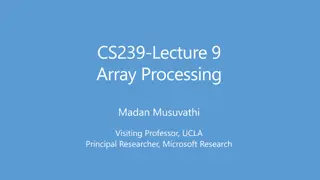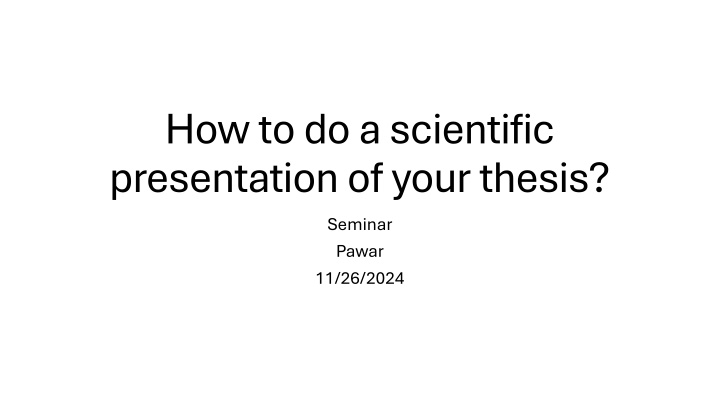
Crafting a Compelling Scientific Thesis Presentation: Key Steps and Tips
Learn how to deliver an effective scientific presentation of your thesis by following a structured approach. From outlining your presentation to defining your thesis statement, grasp the essential elements for engaging your audience and showcasing your research findings confidently.
Download Presentation

Please find below an Image/Link to download the presentation.
The content on the website is provided AS IS for your information and personal use only. It may not be sold, licensed, or shared on other websites without obtaining consent from the author. If you encounter any issues during the download, it is possible that the publisher has removed the file from their server.
You are allowed to download the files provided on this website for personal or commercial use, subject to the condition that they are used lawfully. All files are the property of their respective owners.
The content on the website is provided AS IS for your information and personal use only. It may not be sold, licensed, or shared on other websites without obtaining consent from the author.
E N D
Presentation Transcript
How to do a scientific presentation of your thesis? Seminar Pawar 11/26/2024
Presentation points 1. Present the first part of your results. 2. Introduce a problem that remains. 3. Provide a solution to this problem by presenting more results. 4. Introduce the next problem. 5. Present the results that address this problem. 6. Continue this problem and solution process through your presentation. 7. End by restating your main finding and summarize how it arises from your intermediate results.
How much time to present? The length of time you are allotted for your talk will determine whether you will discuss a single study or multiple studies, and which details to include in your story.
Continued: The background and interests of your audience will determine the narrative direction of your talk, and what devices you will use to get their attention. Will you be speaking to people specializing in your field, or will the audience also contain people from disciplines other than your own? To reach non-specialists, you will need to discuss the broader implications of your study outside your field.
Continued: This is called the thesis statement, or simply the take-home message . Having listened to your talk, what message do you want the audience to take away from your presentation? Describe the main idea in one or two sentences. You want this theme to be present throughout your presentation. Again, the thesis statement will depend on the audience and the type of talk you are giving.
Step 1: Outline your presentation It gives a broad perspective on the problem or topic for people in the audience who may be outside your discipline (i.e., it explains the big- picture problem motivating your study). It describes why you did the study, and why the audience should care. It gives a brief indication of how your study addressed the problem and provides the necessary background information that the audience needs to understand your work. It indicates what the audience will learn from the talk, and prepares them for what will come next.
Introduction: Give a broad perspective on the problem. The easiest way to start with the big picture is to think of a hook for the first slide of your presentation. Why should the audience care? Next, decide on the angle you are going to take on your hook that links to the thesis of your talk. Supplementary details. Once you have established the hook and angle, you need to include supplementary details to support them. For example, you might state your hypothesis. Conclude your introduction. The motivation for the work and background information should set the stage for the conclusion of the introduction, where you describe the goals of your study, and any hypotheses or predictions.
Methods The audience will use your description of the methods to assess the approach you took in your study and to decide whether your findings are credible. Tell the story of your methods in chronological order. Use visuals to describe your methods as much as possible. If you have equations, make sure to take the time to explain them. Decide what methods to include and how you will show them.
Results This is the evidence you present for your thesis. The audience will use the results to evaluate the support for your main idea. Choose the most important and interesting results those that support your thesis. You don t need to present all the results from your study (indeed, you most likely won t have time to present them all).
Summary Summarize your main findings. Displaying your main findings through visuals can be effective. Emphasize the new contributions to scientific knowledge that your work makes.
Conclusion Complete the circle by relating your conclusions to the big picture topic in your introduction and your hook, if possible. It s important to describe any alternative explanations for your findings. You might also speculate on future directions arising from your research.
Step 2: Plan your presentation slides 1.Write the slide titles to match your talk outline. These should be clear and informative declarative sentences that succinctly give the main idea of the slide (e.g., don t use Methods as a slide title). Have one major idea per slide. Decide how you will convey the main idea of the slide (e.g., what figures, photographs, equations, statistics, references, or other elements you will need). The body of the slide should support the slide s main idea. 2.Under each slide title, outline what you want to say, in bullet points.
Step 3: Make the presentation slides Have an informative title slide. Include the names of all coauthors and their affiliations. Include an attractive image relating to your study. Make the foreground content of your slides pop by using an appropriate background. Slides that have white backgrounds with black text work well for small rooms, whereas slides with black backgrounds and white text are suitable for large rooms.
Text elements Use sans serif fonts with a font size of at least 20 for text, and up to 40 for slide titles. Citations can be in 14 font and should be included at the bottom of the slide. Use bold or italics to emphasize words, not underlines or caps. Keep these effects to a minimum. Use concise text. You don t need full sentences. Convey the essence of your message in as few words as possible. Write down what you d like to say, and then shorten it for the slide. Remove unnecessary filler words. Text blocks should be limited to two lines. This will prevent you from crowding too much information on the slide. Include names of technical terms in your talk slides, especially if they are not familiar to everyone in the audience. Proofread your slides. Typos and grammatical errors are distracting for your audience. Include citations for the hypotheses or observations of other scientists.
Graphics Good figures and graphics are essential to sustain audience interest. Use graphics and photographs to show the experiment or study system in action and to explain abstract concepts. Don t use figures straight from your paper as they may be too detailed for your talk, and details like axes may be too small. Make new versions if necessary. Make them large enough to be visible from the back of the room. Use graphs to show your results, not tables. Tables are difficult for your audience to digest! If you must present a table, keep it simple. Label the axes of graphs and indicate the units. Label important components of graphics and photographs and include captions. Include sources for graphics that are not your own. Explain all the elements of a graph. This includes the axes, what the colors and markers mean, and patterns in the data.
Step 4: Practice your presentation Next, practice in front of your advisor, and/or your peers (e.g., your lab group). Ask someone to time your talk. Take note of their feedback and the questions that they ask you (you might be asked similar questions during your real talk). Practice as many times as needed to memorize the order of your slides and the key transition points of your talk. However, don t try to learn your talk word for word. Instead, memorize opening and closing statements, and sentences at key junctures in the presentation. Your presentation should resemble a serious but spontaneous conversation with the audience. Practicing multiple times also helps you hone the delivery of your talk. While rehearsing, pay attention to your vocal intonations and speed. Make sure to take pauses while you speak, and make eye contact with your imaginary audience.


